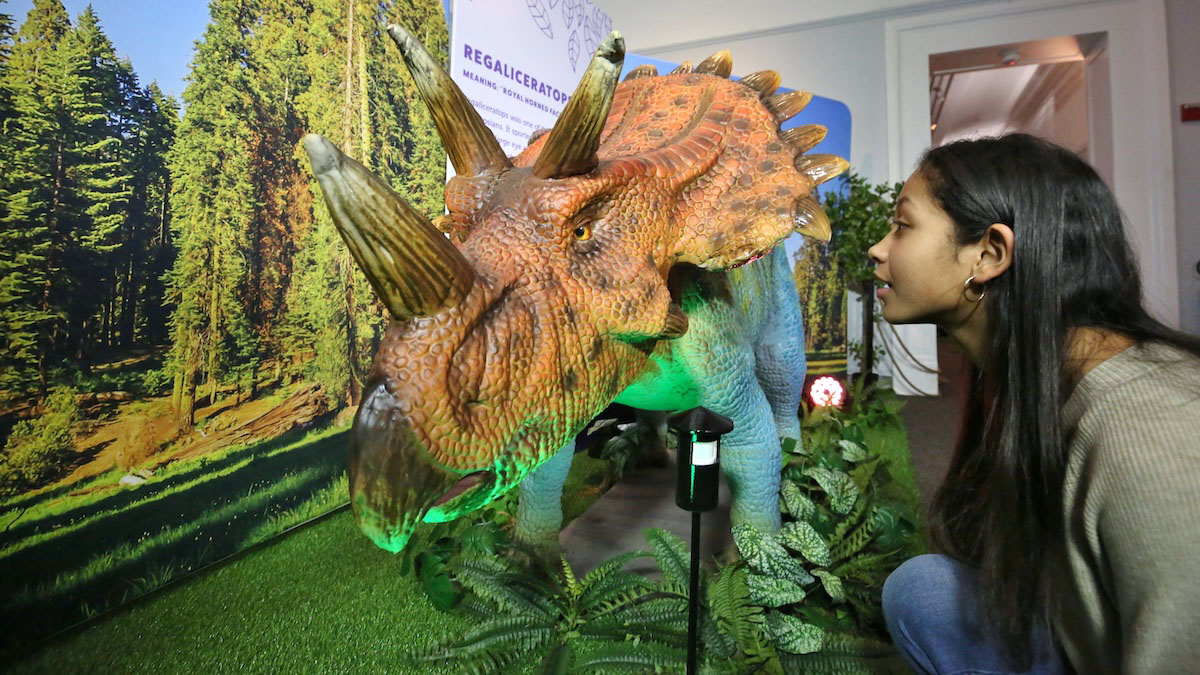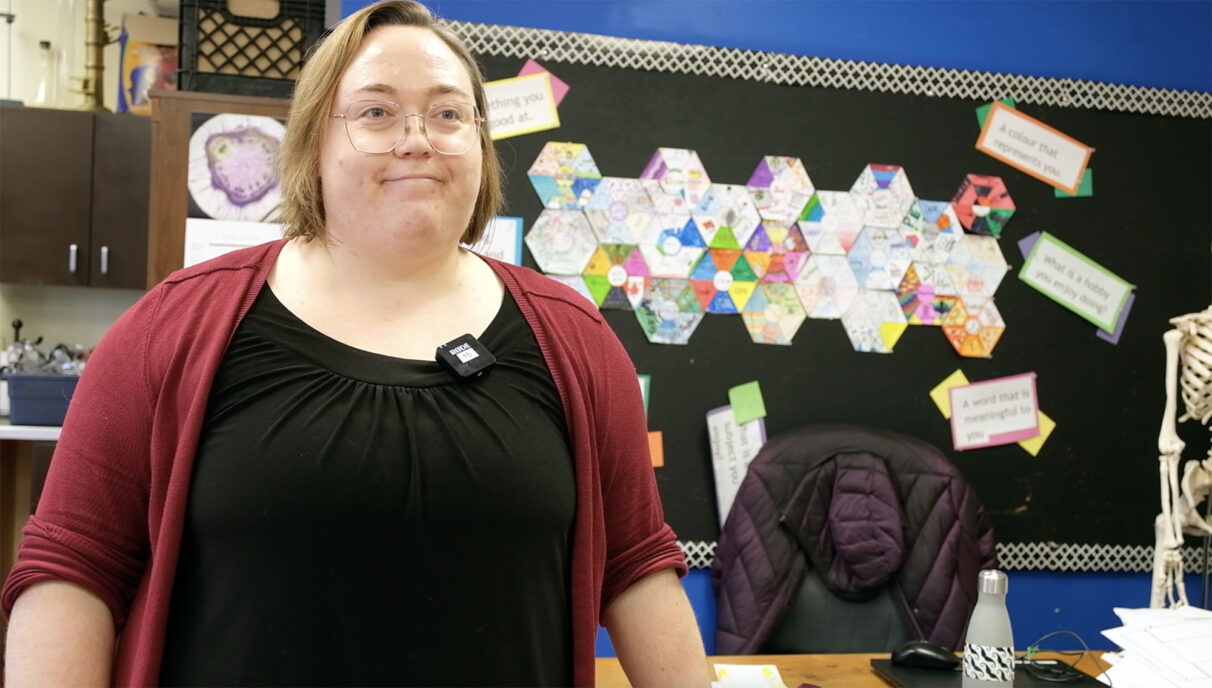Dinosaurs roar at Discovery Centre
Centre's hands-on science learning remains out of reach for most students

caption
A child looks up at the animatronic regaliceratops at the Halifax Discovery Centre's dinosaur exhibit, which is on until April 27.Hands-on learning is anything but extinct inside Halifax’s Discovery Centre, yet many students across the province are missing out on the centre’s interactive science, technology, engineering, and math (STEM) learning.
The centre’s Youth Empowerment in Science (YES!) program reports reaching just 20 per cent of elementary students ages five to 12, leaving the majority without access to the centre’s interactive science education.
“For us (the) more interaction the better is usually key,” said Jillian Phillips, manager of science education at the Discovery Centre.
“By being able to engage students with things that they can do hands-on there’s usually much more interest, and with more interest learning doesn’t drop off as quickly.”
At the Discovery Centre’s new exhibit Dinosaur Explorer, the air hums with the deep, mechanical growl of a tyrannosaurus rex, one of the many creatures that will be featured until April 27.
Designed to immerse visitors in the prehistoric world, the exhibit features animatronic dinosaurs, fossil displays, and interactive learning stations. But for educators, it’s more than just dinosaurs, it’s about making science come alive in a way that sparks lasting curiosity.
At the exhibit, a group of children stand in front of the scaly dinosaur, their faces a mix of awe and apprehension as the creature’s massive jaws creak open. Across from the exhibit, families surround a display that compares the IQ of the human brain versus a dinosaur’s.
As Phillips explains, not all young students are able to access this type of STEM education.
“The largest reasons we’re only able to reach 20 per cent of the province is one: Just geographical location, you know, isolation, but also funding to get out and do programs,” Phillips said.
For Heather Donovan, a science teacher for Grades 7, 8 and 9 at Halifax Independent School, these hands-on experiences are critical in making science feel relevant and exciting to students.

caption
Heather Donovan is a middle-school science teacher at Halifax Independent School.“It’s an opportunity to promote curiosity, to get students really thinking critically about the world around them, how things work together, to look at the broad picture,” she said.
“It’s an opportunity to provide students (with) unique experiences that they don’t typically get with just the pen and paper.”
However, providing students with hand-on STEM education has its challenges.
“Resources is one of the biggest challenges,” said Donovan. “It’s time-consuming to prep the lessons and especially if (you have) large groups of students.”
Beyond the museum walls, the Discovery Centre’s Science on the Road program helps bridge that gap, sending trained educators to schools across the province to provide curriculum-based STEM activities that engage students.
“We try to kind of flip it so that it’s hands-on,” Phillips said. “It’s play-based. It’s interactive and the more fun and play-based you make something, the more comfortable that space is to come into.”
As closing time nears at the Discovery Centre, the once-roaring dinosaurs begin to fall silent. The animatronic creatures, frozen mid-snarl, lower their heads before coming to a halt, ready to do it all again tomorrow for the next crowd of curious onlookers.
About the author

Lynnette Alford
Lynnette Alford is a second year journalism student from British Columbia.
